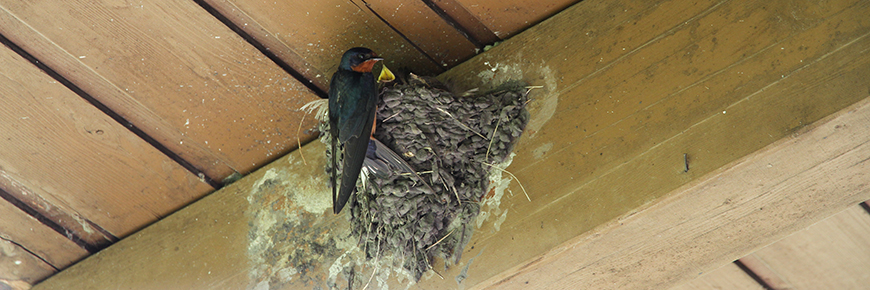
Barn swallows
Riding Mountain National Park
Have you ever walked up to a shelter in the park and wondered what type of bird is swooping around your head? In many cases, it’s probably a barn swallow (Hirundo rustica)! Barn swallows are a medium-sized songbird that are easily recognized by their blue upperparts, cinnamon underparts, and chestnut coloured throat and forehead. They use artificial structures such as the rafters and ledges of cook shacks and other shelters, culverts, and bridges as nesting sites! It has been said that barn swallows have been using human constructed shelters for nesting sites as early as the 1800s when they used wooden habitations constructed by First Nations. Their nests are constructed of mud pellets.
In southern Canada, egg laying starts in the second week of May usually with one to two broods produced each year. Once the baby birds or fledglings finally leave their nest, it is important to let them be and not handle them. It may look like they are injured, but they are just learning to fly! This species forages in the air and it feeds mostly on flying insects such as flies, bees, wasps, moths, and butterflies.
The barn swallow is the most common swallow in the world, but yet they have been designated as a threatened species by COSEWIC since May 2011. It appears that something happened in the 1980s that triggered a sharp decline in population. Their population decline is not well understood, but it is believed that it could be attributed to loss of nesting and foraging habitats, declining insect populations, climate change, parasitism, and human persecution (destroying nests). It is illegal to knock down or destroy a barn swallow nest.
For more information on barn swallows, please visit the Species at Risk Public Registry (COSEWIC)
Related links
- Date modified :